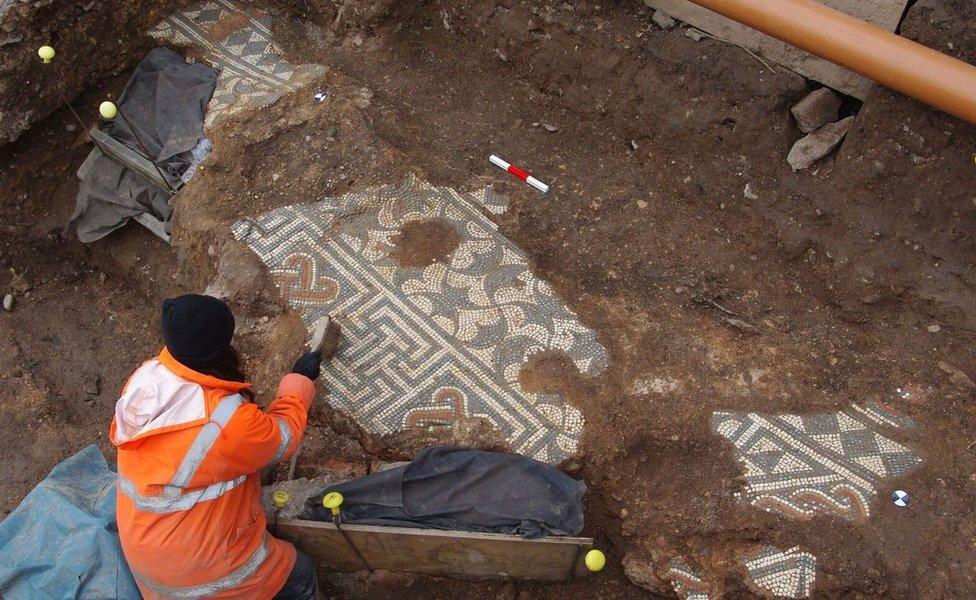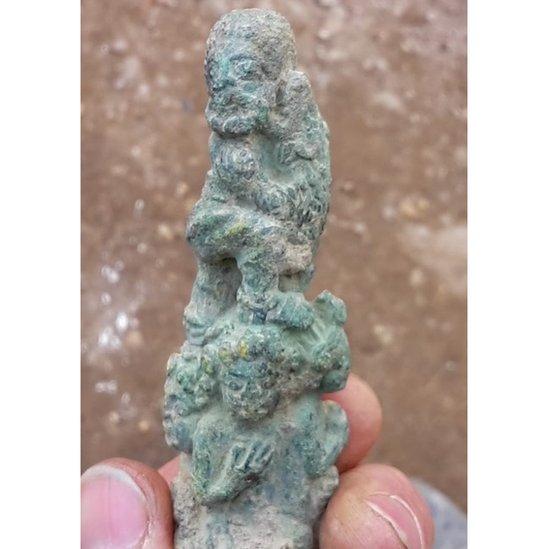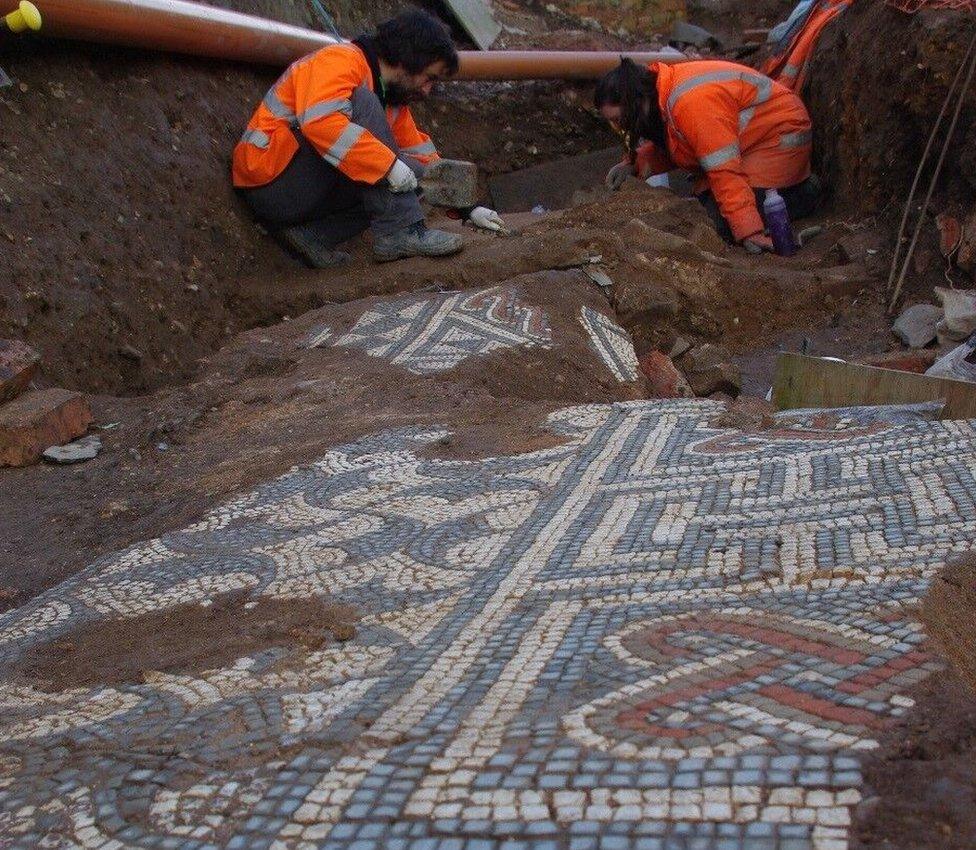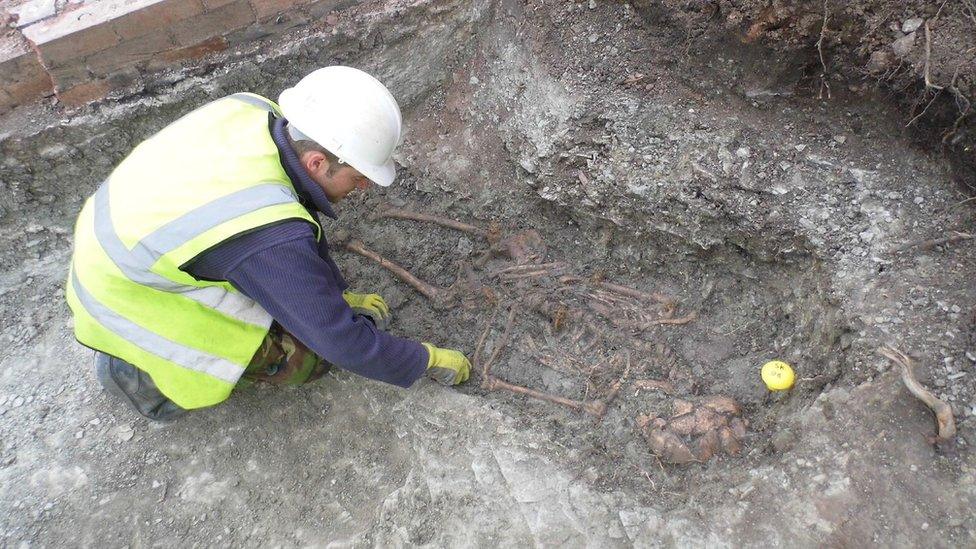Mayor confirms fate of Roman mosaic found in Leicester
- Published

The floors had been damaged by the foundations of later buildings
High-status Roman floors discovered by archaeologists during building work will go on permanent display, it has been confirmed.
The mosaics, part of a 1,700-year-old town house, were found on the site of a development in Leicester.
Open days attracted thousands of people but a question mark hung over the fate over the most spectacular finds.
Now city mayor Sir Peter Soulsby has confirmed they will form part of a £7m revamp of the nearby Jewry Wall museum, external.

The copper alloy knife has several figures on it, thought to be victims being thrown to the lions
The excavation recovered hundreds of artefacts - including a gruesome carved handle depicting people being fed to lions - but the mosaics were the largest found in the city for 150 years, external.
Speaking at the final open day on Sunday, archaeologist Jon Coward said: "The big mosaic will be lifted and conserved but quite where it will end up I couldn't tell you but it should be made available.
"One of the things that could happen is it could go in the Jewry Wall Museum or it could go in the foyer of the building on this site, that is up to the developers."
Sir Peter Soulsby said has now said that after discussions with developers and archaeologists, a decision had been made.
"The Jewry Wall Museum is the obvious place for this to go and after 1,700 years beneath our feet they could not have been found at a better time.
"Other mosaics are currently undergoing restoration so this mosaic will join the wonderful artefacts we already have to make a world class visitor attraction."
It is hoped the refurbished museum will open in two years.

The elaborate mosaic remains in a very good condition
- Published20 May 2017

- Published6 May 2017

- Published2 December 2016
